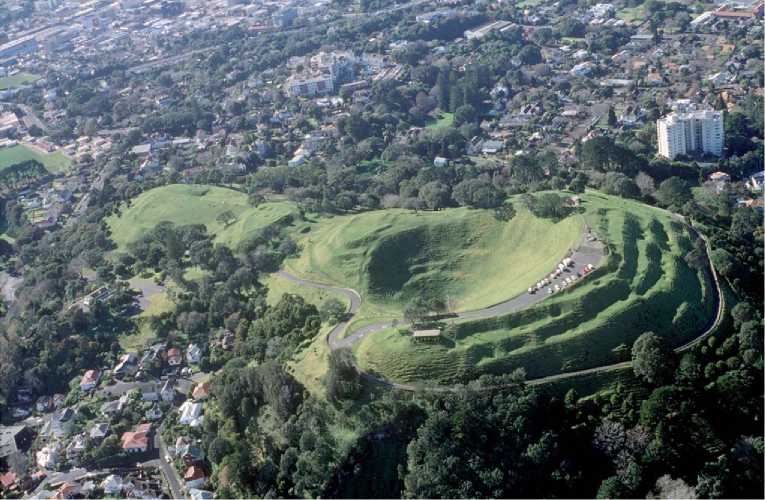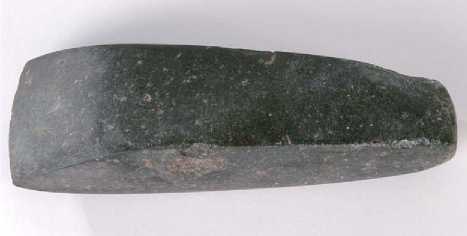By the early sixteenth century there had been two hundred years of relatively unrestricted population growth from a founding population estimated on the basis of mDNA analysis to be approximately 200. Populations would have risen by this time to a few thousand. With the extinction of moa and the drastic decline in seal numbers southern New Zealand, which had previously supported viable populations, had become quite marginal and the focus of occupation shifted to the warmer horticultural north. This marks the beginning of a series of changes that culminated in the Classic phase which is an assemblage of cultural characteristics based on observations of Maori life by the first European explorers. The chronology of the emergence of Classic Maori culture is uncertain but trajectories of change can be identified archaeologically from this time including the development of new site types, new artifact assemblages, different patterns of resource utilization and movement, and economic practices.
Site types. The site type most commonly associated with the Classic phase is the pa (Figure 3). These are often described as fortified settlements, but they probably include a wider range of functions. The earliest pa for which radiocarbon age estimates have been obtained date to approximately AD 1500 and today approximately 7000 pa sites have been recorded ranging in size from a few hundred square meters to many hectares. Pa are characterized by earthwork defenses including ditches, banks, and artificially steepened scarps. They were usually located on easily defendable positions such as hill tops, ridges, and headlands surrounded by steep cliffs. European observations of pa document the use of high wooden fences or palisades with elaborate gateways and archaeological excavations bear this out. Internally, pa sites may contain structures including terraces with food storage pits, houses, and drainage systems. Some pa are probably best described as defended settlements, others as citadels for retreat at times of war and others as defended outposts located adjacent to remote resources. Generally, pa are found close to resource zones such as large shellfish beds, fishing grounds, and rich horticultural soils.
Few pa have been investigated archaeologically and oral traditions of pa tend to be restricted to accounts of major battles. As a result there is still little known about this important class of site, but their appearance is often linked to other changes in social and economic life. Oral tradition associates many of the larger pa with the political activities of named chiefs and in many instances they clearly have a connection with tribalism, boundaries in the landscape and with personal and tribal identity. Some archaeologists have linked the emergence of pa to population growth and the development of political complexity, especially of the emergence of Polynesian-style ranked chiefdoms. In many parts of the country pa are concentrated in places with high-yielding

Figure 3 Maungawhau (Mt Eden) in Auckland city. One of a number of large volcanic cone pa of the region. (Photo Courtesy of the Auckland Institute and Museum).
Horticultural soils and this has further stimulated discussions of intensification, competition, and the development of political complexity. In fact, there is independent evidence in the archaeological record to suggest that simple kin-based chiefdoms were present throughout New Zealand prehistory and that horticultural intensification was minimal. Thus while the emergence of pa is definitely related to social change the nature of this relationship is far from clear.
New artifact assemblages. Although there was continuity in the general form of the artifact assemblage, the styles of many artifacts changed through time. While adzes of the Archaic phase were, for the most part, markedly quadrangular, and often with a lashing modification at the butt, those of the Classic phase were generally of a rounded quadrangular cross section and lacked such modification. Early adzes were made using percussion technology before grinding and polishing part of the surface, while later adze manufacture relied much more on abrasive techniques. This change is largely attributable to changes in stone material used for adze making.
Fish hooks of the Archaic were most commonly made in one piece - often of moa bone - and were replaced in the Classic by two-piece forms that employed a bone point and a wooden shank. Fishing lures with bone points were also used throughout the sequence with the shanks of early forms being predominantly stone or bone and those of later forms either bone or wood (Figure 4). The ornaments, dominated in the Archaic by large necklace units in bone, ivory or serpentine, were replaced in the Classic phase by generally smaller neck or ear pendants often of bone, teeth, or nephrite.
By European arrival a sophisticated Maori art tradition was in place that still thrives in modern New Zealand. Classic Maori art was particularly well developed in the areas of tattoo, textile manufacture, and wood carving. Archaeological evidence shows that all of these art forms were present from the Archaic but Maori art has diverged sufficiently from that of other East Polynesian cultures to infer a period

Figure 4 Maori stone adze. (Photo Courtesy of the Auckland Institute and Museum).
Of radical development and transformation leading to the emergence of the Classic Maori art tradition.
Patterns of resource utilization and movement. A remarkable characteristic of early settlement is that within a generation of landfall, nearly every major stone source in the country had been discovered, and was being transported long distances. For example, obsidians from the northern North Island are found in early sites more than 1000 km away in the southern South Island and argillites from the northern South Island are found in early sites 750 km distant in the far north, as well as in the southern South Island. By the Classic phase most stone sources were no longer being moved over long distances and there was a greater concentration on local material. There is one exception to this and that involves the use of nephrite. Although present in very small amounts in some Archaic sites, the use of nephrite became much greater in the Classic phase where it was used for weapons, adzes, and ornaments. Nephrite is only found in the South Island, and is almost entirely restricted to a small number of source areas on its mid-southern west coast. A small number of nephrite adzes have been found in early sites, mainly those located close to the source areas, but by the time of European contact it was in widespread use over much of New Zealand. Whatever the reason for the increased use and distribution of nephrite, its widespread presence late in the sequence indicates that the transport and trade mechanisms present in the Archaic were still available in the Classic, although there may have been changes in the detail of their employment.
Economic practices. The tropical food plants introduced from Polynesia would only grow easily in the frost-free north. Their successful cultivation became increasingly marginal to the south, with their effective limit being kumara gardening in the vicinity of Banks Peninsula. Although horticulture was practiced, where possible, throughout New Zealand prehistory, it is likely that it played a less important role in the economy during the Archaic phase when meat sources were more abundant. In the centuries following the loss of the moa and seal and as populations grew there is evidence for the expansion of horticulture - more and more land was cleared and brought into production. The direct record of this is in the form of modified soils, drainage systems, and concentrations of pit and terrace complexes associated with food storage. There is indirect evidence of land clearance in the sediment record. The increase in kumara production coincides with the growth of the pa complex, and some archaeological explanations stress the idea that increasing investment in land stimulated a neeD for defending that land from outsiders. The whole result was the development of bounded and defended territories. Again, the archaeological evidence while generally supportive of such a model is yet untested.




 World History
World History









